9. Creative Compositions
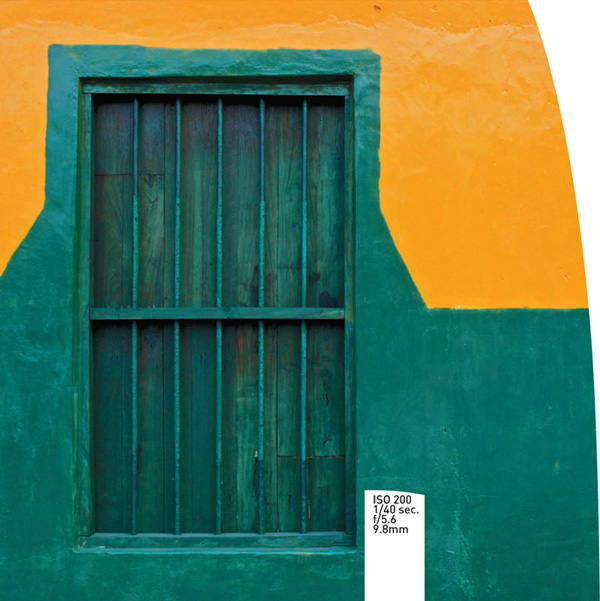
Photo: Paul Perton
Improve Your Pictures with Sound Compositional Elements
Creating a great photograph takes more than just the right settings on your camera. To take your photography to the next level, you need to gain an understanding of how the elements within the frame come together to create a compositionally pleasing image. Composition is the culmination of light, shape, and to borrow a word from the iconic photographer Jay Maisel, gesture. Composition is a way for you to pull your viewing audience into your image and guide them through the scene. Let’s examine a few methods you can use to add interest to your photos by utilizing some common compositional elements.
Poring Over the Picture
Looking at this photo, you’d never guess it was taken in the Pearl District of downtown Portland, Oregon. By positioning himself at an unusual angle, photographer Bob Eddings created a shot that could just as easily be captured in the agricultural plains of the Midwest.
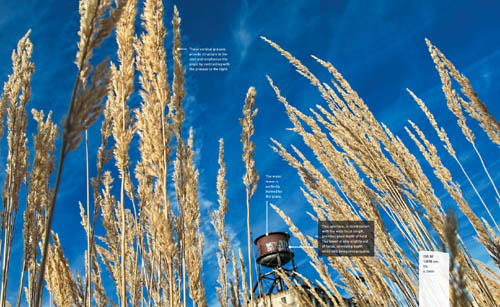


Depth of Field
Long focal lengths and large apertures allow you to isolate your subject from the chaos that surrounds it. I utilize the Av mode for the majority of my shooting. I also like to use a longer focal length to shrink the depth of field to a very narrow area. The blurred background and foreground force the viewer’s eye toward the sharper, in-focus areas, which gives greater emphasis to the subject (Figure 9.1).
Figure 9.1. The combination of a large aperture and zoomed lens can create a shallow depth of field to isolate the subject.
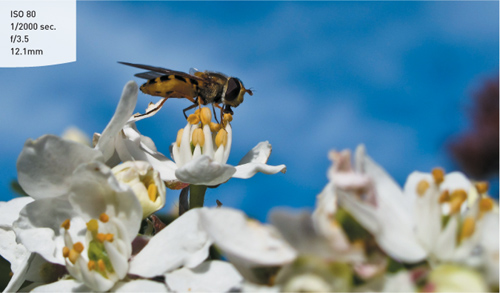
[Photo: Charlwood Photography]
Occasionally a greater depth of field is required to maintain a sharp focus across a greater distance. This might be due to the sheer depth of your subject, where you have objects that are near the camera, but sharpness is desired at a greater distance as well (Figure 9.2).
Figure 9.2. The closer you are to your subject, the smaller the aperture you will need to achieve a large depth of field.
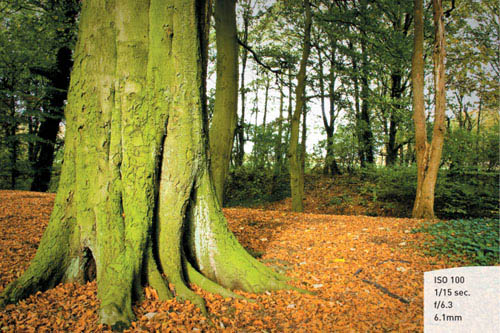
[Photo: James Williams]
Or perhaps you are photographing a reflection in a puddle. With a narrow depth of field, you could only get the reflected object or the puddle in focus. By making the aperture smaller, you will be able to maintain acceptable sharpness in both areas (Figure 9.3).
Figure 9.3. Getting a distant subject in focus in a reflection, along with the reflective surface, requires a small aperture.
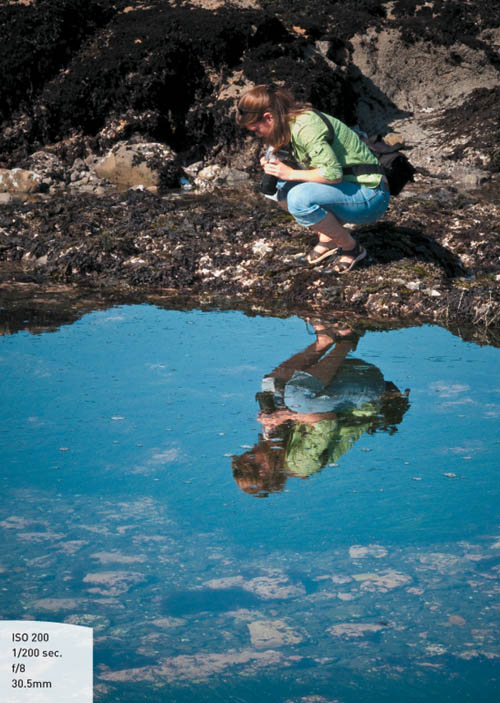
[Photo: Anthony Goto]
Angles
Having strong angular lines in your image can add to the composition, especially when they are juxtaposed to each other (Figure 9.4). This can create a tension that is different from the standard horizontal and vertical lines that we are so accustomed to seeing in photos.
Figure 9.4. The strong angular lines of the building create a dynamic composition.

[Photo: Ryan Paul/phenotyp.com]
Point of View
Sometimes the easiest way to enhance your photographs is simply to change your perspective. Instead of always shooting from a standing position, try moving your camera to a place where you normally would not see your subject. Try getting down on your knees or even lying on the ground. This low angle can completely change how you view your subject and create a new interest in common subjects (Figure 9.5).
Figure 9.5. Put your camera in a position that presents an unfamiliar view of your subject.
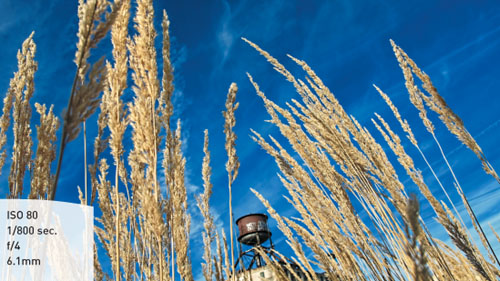
[Photo: Bob Eddings]
Patterns
Rhythm and balance can be added to your images by finding the patterns in everyday life and concentrating on the elements that rely on geometric influences. Try to find the balance and patterns that often go unnoticed (Figure 9.6).
Figure 9.6. These concrete steps are nice enough when viewed from above, thanks to their curved design, but I found them to be even more interesting when viewed straight on.
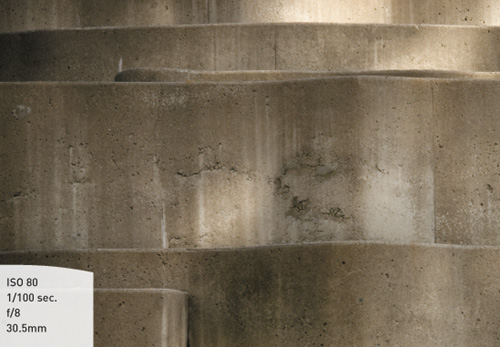
[Photo: Jeff Carlson]
Color
Color works well as a tool for composition when you have very saturated colors to work with. Some of the best colors are those within the primary palette. Reds, greens, and blues, along with their complementary colors (cyan, magenta, and yellow), can all be used to create visual tension (Figure 9.7). This tension between bright colors adds visual excitement, drama, and complexity to your images when combined with other compositional elements.
Figure 9.7. The yellow and green colors contrast in a bold way; the washed texture of the green adds visual interest.
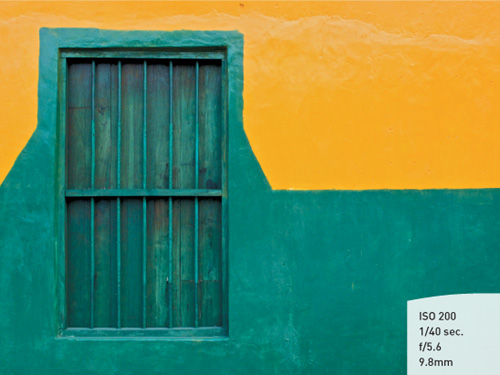
[Photo: Paul Perton]
You can also use a color as a theme for your photography. If you’re out shooting when the skies are blue, for example, try to use the sky as part of the background for some element of your image. The blue sky can serve as a pleasing contrast, incorporating visual interest and introducing isolation to the subject. Or, find shots that include several variations of the same hues.
Contrast
We just saw that you can use color as a strong compositional tool. You can also introduce contrast through different geometric shapes that battle (in a good way) for the attention of the viewer. You can combine circles and triangles, ovals and rectangles, curvy and straight, hard and soft, dark and light, and so many more (Figure 9.8). You aren’t limited to just one contrasting element either. Combining more than one element of contrast will add even more interest. Look for these contrasting combinations whenever you are out shooting, and then use them to shake up your compositions.
Figure 9.8. The angular lines of the building play nicely against the softer edges of the shadow.

[Photo: Bob Eddings]
One of the most effective uses of color is to combine two contrasting colors that make the eye move back and forth across the image (Figure 9.9). There is no exact combination that will work best, but consider using dark and light colors, like red and yellow, or blue and yellow, to provide the strongest contrasts.
Figure 9.9. The bright orange wall contrasts with the gray cement and weathered wood, which also focuses your eye on the brightly colored boots.
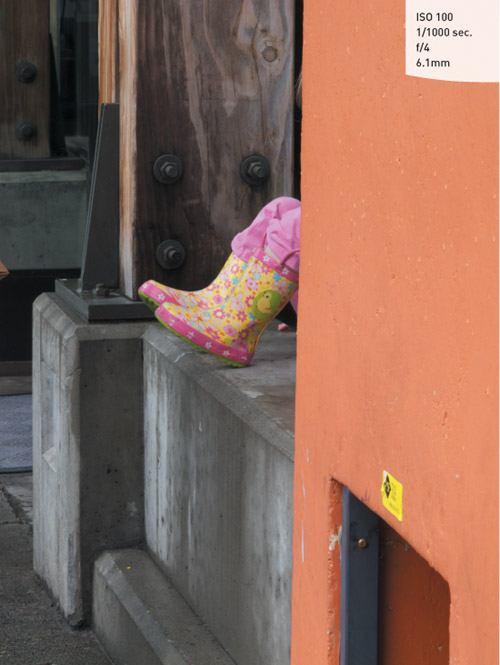
[Photo: Jeff Carlson]
Leading Lines
One way to pull a viewer into your image is to incorporate leading lines. These are elements that come from the edge of the frame and then lead into the image toward the main subject (Figure 9.10). This can be the result of vanishing perspective lines, an element such as a river, or some other feature used to move from the outer edge in to the heart of the image.
Figure 9.10. The road leads the eye directly toward the mountains and water in the distance.
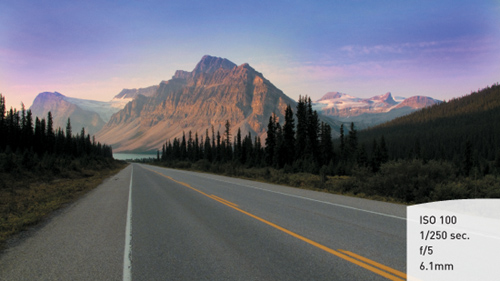
[Photo: Evan Spellman/Earth Light Photography]
Splitting the Frame
Generally speaking, splitting the frame right down the middle is not necessarily your best option. While it may seem more balanced, it can actually be pretty boring. You should utilize the rule of thirds when deciding how to divide your frame.
With horizons, a low horizon will give a sense of stability to the image. Typically, this is done when the sky is more appealing than the landscape below (Figure 9.11). When the emphasis is to be placed on the landscape, the horizon line should be moved upward in the frame, leaving the bottom two-thirds to the subject below.
Figure 9.11. The sky dominates the top two-thirds of the frame, drawing your eye down the kite line to the beach below.

[Photo: Anneliese Voigt]
Also, don’t think everything needs to be split along horizontal lines. Even though the horizon line in Figure 9.12 is roughly centered, the frame is split into thirds vertically by positioning the bridge and its reflection at the right edge.
Figure 9.12. The rule of thirds also applies to the left and right sides of the frame. Here, the bridge and reflection counterbalances the light source and clouds.

[Photo: Jeff Carlson]
Frames within Frames
The outer edge of your photograph acts as a frame to hold all of the visual elements of the photograph. One way to add emphasis to your subject is through the use of internal frames. Depending on how the frame is used, it can create the illusion of a third dimension to your image, giving it a feeling of depth.
Chapter 9 Assignments
Apply the shooting techniques and tools that you have learned in the previous chapters to these assignments, and you’ll improve your ability to incorporate good composition into your photos. Make sure you experiment with all the different elements of composition and see how you can combine them to add interest to your images.
Learning to see lines and patterns
Take your camera for a walk around your neighborhood and look for patterns and angles. Don’t worry so much about getting great shots as much as developing an eye for details.
The ABCs of composition
Here’s a great exercise: Shoot the alphabet. This will be a little difficult, but with practice you will start to see beyond the obvious. Don’t just find letters in street signs and the like. Instead, find objects that aren’t really letters but have the shape of the letters.
Finding the square peg and the round hole
Circles, squares, and triangles. Spend a few sessions concentrating on shooting simple geometric shapes.
Using the aperture to focus attention
Depth of field plays an important role in defining your images and establishing depth and dimension. Practice shooting wide open, using your largest aperture for the narrowest depth of field. Then find a scene that would benefit from extended depth of field, using very small apertures to give sharpness throughout the scene.
Leading them into a frame
Look for scenes where you can use elements such as leading lines, and then look for framing elements that you can use to isolate your subject and add both depth and dimension to your images.
